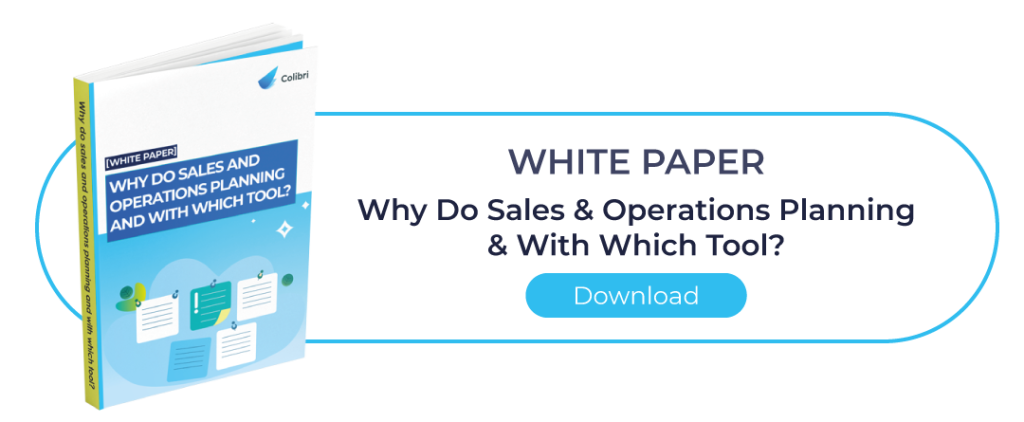As a key part of the organization, procurement buyers have the heavy responsibility of sourcing products and materials necessary for business operations. Often reporting to the Procurement Officer, they supervise purchasing within a predefined contractual framework. They ensure that the right quantities are ordered at the right time, so that the company can produce, stock and deliver on time to its customers.
In spite of a lack of visibility on the upstream needs, the buyer must ensure that there is no overstock, no stock-outs and no delays. In addition to fluctuating forecasts and changing internal needs, they must also deal with a certain rigidity on the supplier side. All these elements make procurement a stressful job, even more so when there’s no collaborative supply chain tool that helps visibility!
Procurement Buyer, a position too often lacking forecast visibility
Located at the end of the supply chain, procurement buyers are often suffering from the snowball effect of events occurring upstream. They sometimes find themselves faced with an ERP asking to place an order 10 times larger than usual, and there’s no way of knowing whether it is a comma error or the consequence of a series of decisions taken upstream that they are not aware of. Is it because a new safety stock is needed? To cover a large order? The result of a new forecast? A new lot size? An error in inventory? It often remains a complete mystery.
Procurement buyers are faced with constantly fluctuating needs and demands, without knowledge of the underlying causes. In addition, they are confronted with changing management rules. From one day to the next, they are asked to make 180° turns, to cancel products already ordered, to order new ones, to modify orders… This is all part of the job, except that downstream, they must deal with suppliers who have their own constraints. For example, if the supplier is on the other side of the world, the 4-month lead time cannot be reduced, even with the best will in the world.
Supplier commitments are rigid by nature.
With B2B distribution or industrial goods, it is not uncommon for a supplier to have up to 4 months of lead time and specific shipping rules. For example, with Asian suppliers, there will be disruptions due to the Chinese New Year. Procurement buyers are therefore faced with a certain degree of inflexibility from their suppliers, which means that they cannot change plans from one day to the next. Internally, however, they are expected to be very agile, constantly adapting to last-minute changes in plans and managing emergencies… These conflicting imperatives place them under permanent stress. Furthermore, in addition to their responsibilities to ensure that suppliers respect their contracts and deadlines, they must close long term deals, which can be costly to the company.
In addition, the position requires an excellent understanding of the products but also of the associated flows in order to be able to detect an abnormal order, measure potential risks on quality or deadlines, or master possible alternatives.

The benefits of a supply chain tool for the purchaser
1. A transversal visibility
Lack of visibility is the main issue for procurement buyers. History, forecast archives, batch sizes, planned receipts, safety stocks… With a well thought-out supply chain tool, all the necessary information is centralized in one place. No more digging through scattered Excel files, trying to query the ERP or calling other departments to understand why the system ordered so many products.
Having access to archives allows a formatted and consolidated view of the past, which until now wasn’t formalized. With a supply chain tool such as Colibri, the purchaser also has access to a variability analysis screen, which compares demand plans over time. So, if for a given product the purchaser has been ordering 100 pieces each month and the system suddenly asks him to order 1,000 pieces, he can easily work out why and check that it is not a mistake.
In case of doubt, the collaborative feature of the software makes it easy to consult the person in charge, for example the forecaster. The exchange remains recorded in the system, which makes it easy to find the information if the same situation occurs again.
2. A better management of suppliers’ relations
In order to make last minute negotiations and adjustments more acceptable to suppliers, it is in the best interest of the purchasers to develop a good partnering relationship with them. To do this, it is important to keep in mind that the purchasers take on the role of a forecaster with the suppliers. It is up to them not to reproduce the mistakes made upstream, by providing the suppliers with as much visibility as possible and by being perfectly transparent. This win-win approach is only possible if the purchasers have a good supply chain tool.
3. The value of S&OP for the procurement buyer
Variability of cost and demand in procurement is inherent to the activity of a company. Either variability is experienced as a constraint, “we will adapt the best we can”, or it is considered as a competitive advantage. In the latter case, it is necessary to get organized to properly manage this variability. This is what an S&OP approach is all about. Thanks to cross-functional visibility on operations, executives can make strategic decisions to improve the fluidity of the supply chain and facilitate the procurement department’s work.
Although the short-term forecast may change, a 24-month forecast is made, and decisions are made based on the rates of fluctuation in demand for each product family and customer. By considering the variability of demand and assessing it according to the importance and price of the products, the company defines the course of action for each product. The whole supply chain process is more structured and the supplier gains in serenity thanks to predefined management rules set to proactively control the flow. S&OP also provides a framework for the procurement buyers: the decision margin is clear when it comes to spending the company’s money and to whom the information should be forwarded in case of deviations.
As you may have gathered, the anxiety of the procurement manager is characterized by a cruel lack of visibility on forecasts, management rules and understanding of how the need is generated. A tool like Colibri gives them visibility and the ability to better collaborate with colleagues and understand requests, which allows in turn an improved supplier relationship at the end of the line. With Colibri, the procurement buyer can be more agile and in control within a defined decision scope. In the end, with the right supply chain tool, the supplier gains in serenity and productivity.






